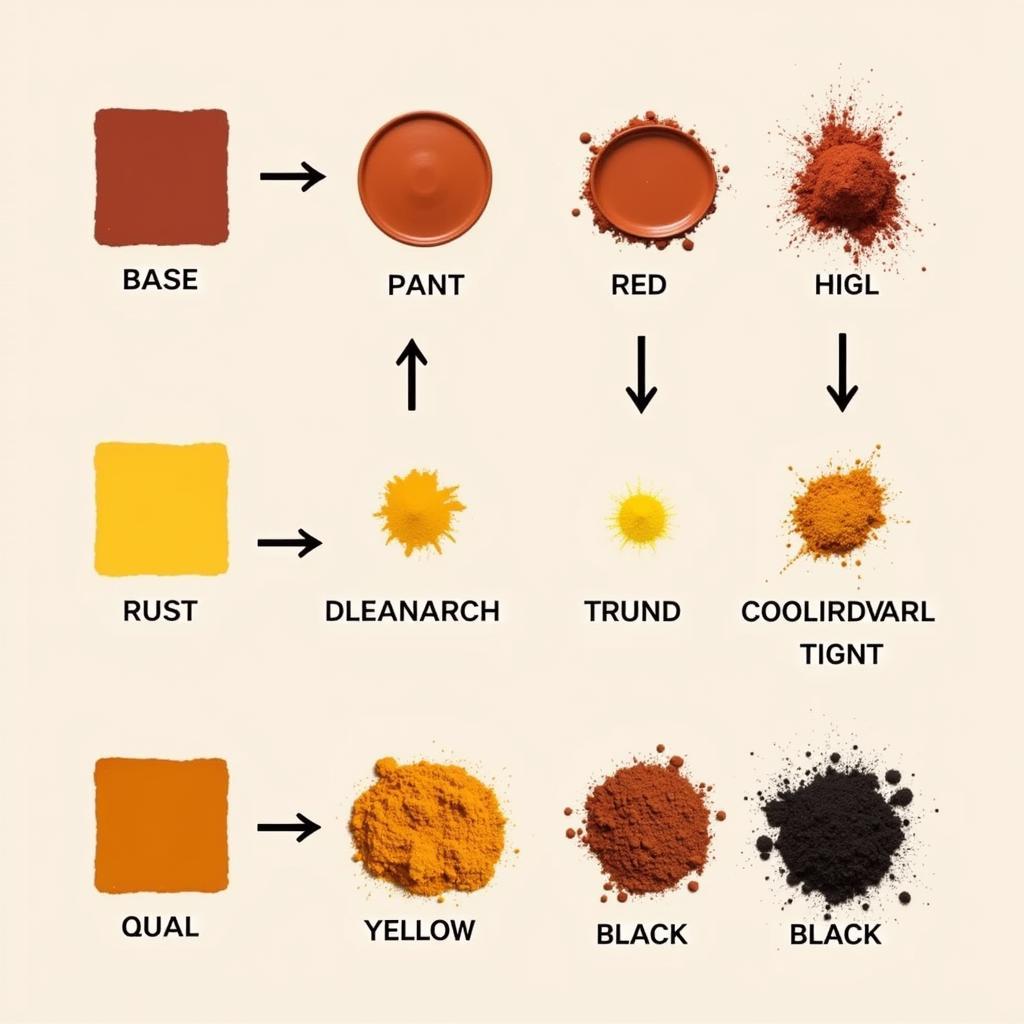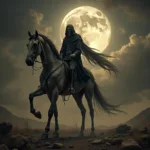Rust, that rich, earthy hue evocative of oxidized metal, is indeed a color. More than just a simple descriptor of a decaying process, rust color represents a complex interplay of orange, brown, and red, offering a warmth and depth that has captivated artists and designers for centuries.
Decoding the Color Rust
So, what exactly makes a color “rust”? It’s the distinct combination of reddish-brown tones, often with a hint of orange, that mimics the appearance of oxidized iron. This color isn’t found on a standard color wheel in the same way primary and secondary colors are. Instead, it’s a tertiary color, meaning it’s a mix of a primary color (red) and a secondary color (orange, which itself is a mix of red and yellow). The exact shade of rust can vary, influenced by factors like the amount of oxidation, the type of metal, and even environmental conditions. This variation makes it a versatile and dynamic color, suitable for a wide range of applications, from fashion to interior design.
 Rust Color Variations on Metal Surfaces
Rust Color Variations on Metal Surfaces
The Allure of Rust in Design and Beyond
Rust color has a timeless appeal, bridging the gap between rustic charm and contemporary sophistication. It evokes a sense of history and natural beauty, reminiscent of weathered landscapes and aged artifacts. In interior design, rust can add warmth and character to a space, working well with natural materials like wood and stone. It can be used as an accent color in furniture, textiles, or wall paint, instantly adding a touch of earthy elegance. what color goes with rust color offers a deep dive into color pairings that complement rust beautifully.
Is Rust Color Trending?
Rust color is experiencing a resurgence in popularity, appearing in everything from fashion runways to home decor magazines. Its warm and inviting nature resonates with current design trends that emphasize natural elements and organic textures. The versatility of rust allows it to be incorporated into various design styles, from bohemian to industrial chic.
Creating Rust Color with Paints and Pigments
Achieving the perfect rust hue in your artistic endeavors or DIY projects can be a fascinating process. While pre-mixed rust-colored paints are readily available, mixing your own allows for greater control over the final shade. how to make rust colored paint provides a comprehensive guide on achieving that perfect rusty hue. Typically, a base of burnt sienna or burnt umber is used, with varying amounts of red, orange, and yellow added to achieve the desired depth and tone. A touch of black can be added to deepen the color and create a more weathered effect.
 Mixing Rust-Colored Paint with Different Pigments
Mixing Rust-Colored Paint with Different Pigments
How to Make a Realistic Rust Effect
For those looking to replicate the texture and appearance of real rust, there are various techniques available. These range from using specialized rusting solutions on metal surfaces to creating faux rust effects with paint and other materials. how to make a rust color with paint explores different methods for achieving a convincing rust effect, offering step-by-step instructions and helpful tips.
The Many Shades of Rust
While the term “rust” evokes a general color family, it encompasses a spectrum of shades. From the light, almost peachy hues of rust orange to the deep, earthy tones of rust brown, the variations are vast and offer a wealth of possibilities for creative expression. Understanding the nuances of these different shades allows you to use rust color effectively in your design projects. what colors go with rust orange delves into complementary color palettes for this specific shade. Specialized color charts, such as the por 15 colors chart, can provide further inspiration and guidance.
“Rust color’s strength lies in its ability to evoke both strength and vulnerability, grounding a space while adding a touch of unexpected beauty,” says renowned color consultant, Amelia Hughes.
Conclusion
Rust, in all its variations, is more than just a color—it’s a statement. Whether you’re drawn to its warm embrace in interior design, its expressive power in art, or its symbolic representation of the passage of time, rust color offers a unique and captivating aesthetic. Embracing this earthy hue can add depth, character, and a touch of natural beauty to any project.
FAQ
- What is the primary color base for rust? Red.
- What are some colors that complement rust? Teal, navy blue, and cream.
- Can I create a rust effect on non-metal surfaces? Yes, with specialized paints and techniques.
- Is rust color suitable for modern interiors? Absolutely, it adds warmth and character.
- Where can I find pre-mixed rust-colored paints? Most art supply and hardware stores.
- How do I prevent real rust from forming on metal? Use rust-resistant primers and paints.
- What is the difference between rust and burnt orange? Rust is typically darker and browner than burnt orange.
Need more help? Contact us at Phone: 0373298888, Email: [email protected] or visit our address: 86 Cau Giay, Hanoi. We have a 24/7 customer service team.
